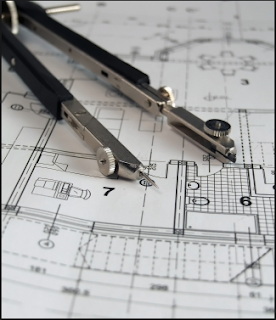Is ED an Engineering Language?
Engineering Drawing is the Language of Engineers. A drawing drawn by an Engineer, having Engineering knowledge, for the Engineering purposes is an Engineering Drawing. It is very important to learn Engineering Drawing because it is a starting point of all Engineering branches-Mechanical, Production, Civil, Electrical, Electronics, Communication, Computer Science, Chemical, Textile, Transportation, Metallurgical, Instrumentation, Automobile, Architectural, Agricultural, Aeronautical, Marine, Mining Engineering etc.
It is the Universal Graphic Language of Engineers, spoken, read and written in its own way. Every language has its own rules of grammar. Engineering drawing also has its grammar in the theory of projections, its idioms in conventional practices, its punctuations in the types of lines, its abbreviations, symbols and its descriptions in the constructions. It is up to engineer, what angle he wanna chose for describing his diagram or design best, and what he or she thinks, is better.
Students should not get confused Engineering Drawing with Artistic Drawing. The latter is commonly used by the artists for commercial purposes, such as in painting, advertisement boards, etc.
Geometrical Drawing:
Geometrical drawing is the foundation of all Engineering Drawings. It is a subject, difficult to learn or to teach without the aid of a good text book. A good speed in drawing work should be achieved, because "time is money" in the industry. Accuracy, neatness and legibility are of great importance in engineering drawing.
Geometrical Drawing consists of:
1. Plain Geometrical Drawing and
2. Solid Geometrical Drawing.
Geometrical drawing is the art of representation of geometrical objects such as square, rectangle, cylinder, cone, sphere etc. on a drawing sheet or paper.
Plane Geometrical Drawing is the art of representation of objects having two dimensions or 2-D structures, i.e., breadth and length such as square, rectangle, quadrilateral etc. on a drawing sheet, paper or board.
Solid Geometrical Drawing is the art of representation of objects of three dimensions 3-D structures, i.e., length, breadth and height, such as cube, cylinder, sphere etc. on a drawing sheet, paper or drawing board.
Engineering drawing, particularly, geometrical" drawing is the basis for various specialized types of drawings applied to various fields MACHINE DRAWING in the machine industries ; STRUCTURAL DRAW¬ING in the structural constructions such as buildings, bridges and dams; ELECTRICAL DRAWING in the electrical industries ; AERONAUTICAL DRAWING in the aircraft manufacturing ; MARINE DRAWING in ship construction and so on.

No comments:
Post a Comment